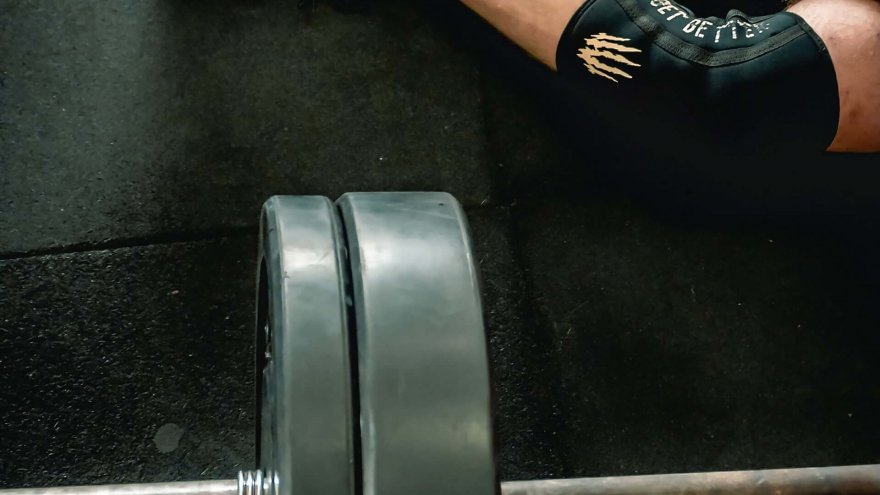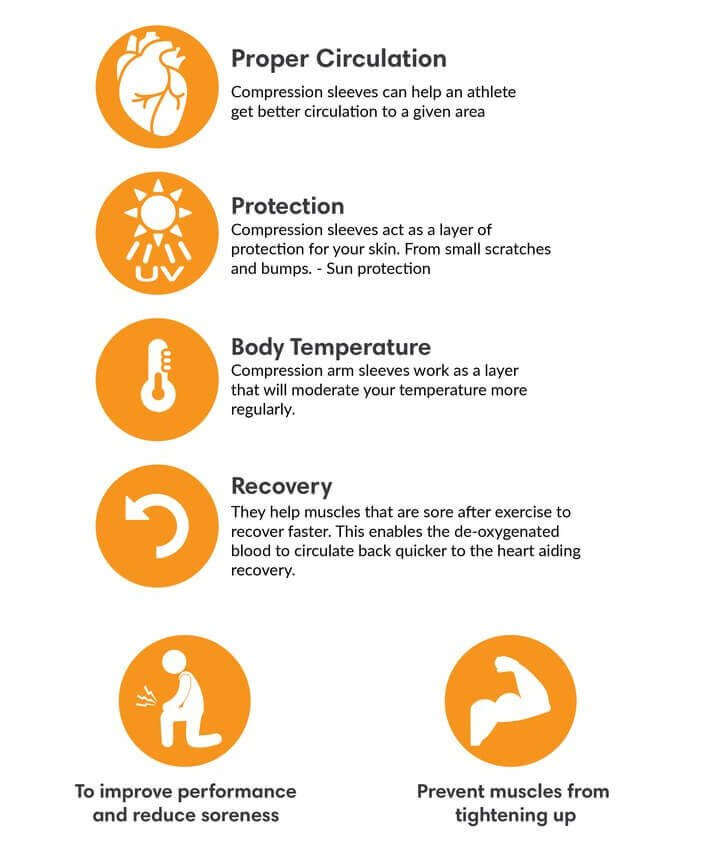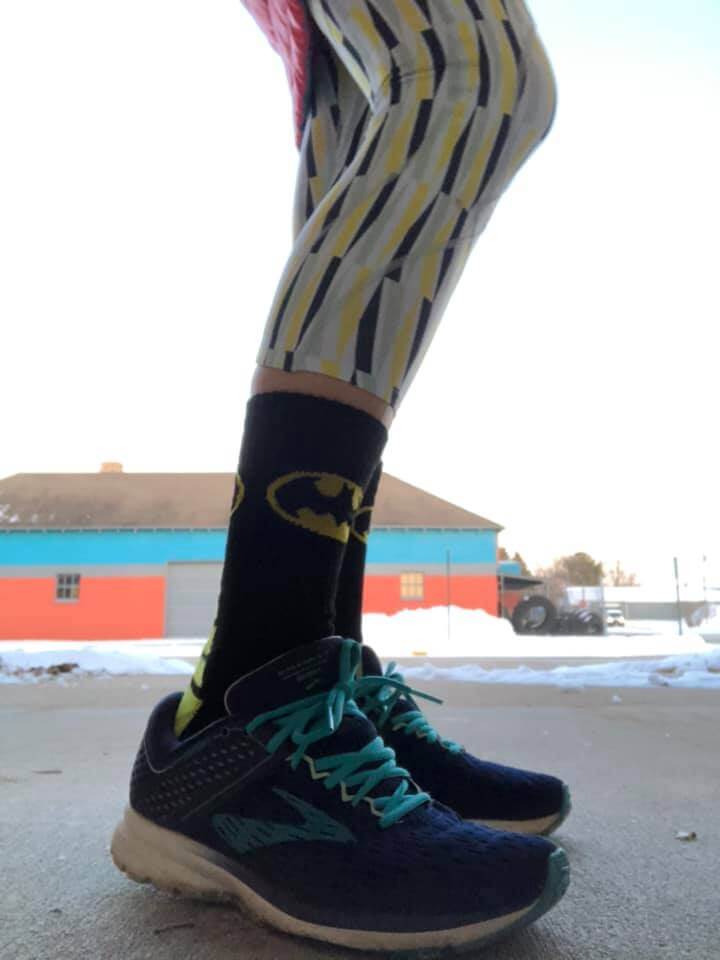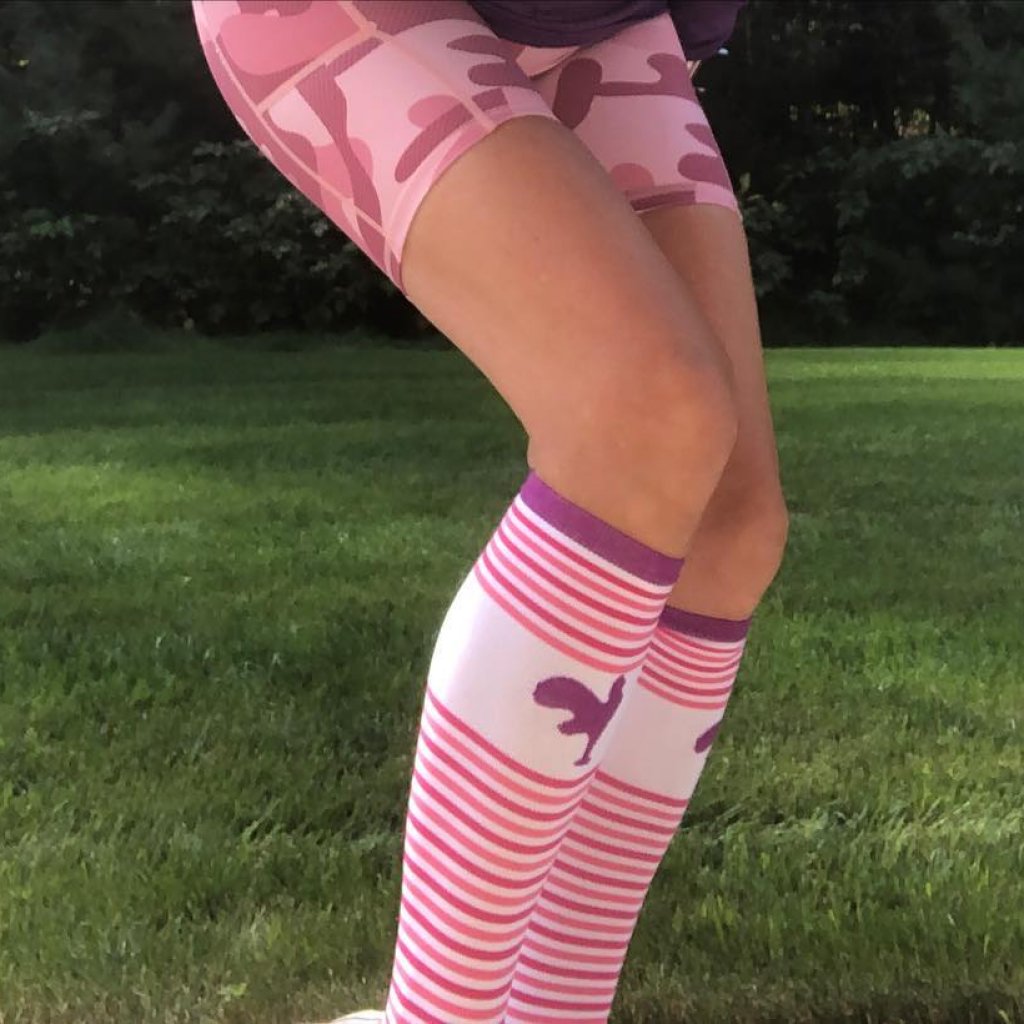Compression Sleeves: Good or Gimmick?

Compression sleeves are tight, open-ended, elasticized fabric tubes that can be worn on the arm, elbow, wrist, knee, lower leg, or ankle.
Compression products are all the rage. You can see them on runners, football players, and other athletes. You also find certain professionals using compression to prevent body fatigue, such as nurses and surgeons.
Even with all of the people who use compression, some wonder if compression actually makes a physical difference on the human body or if it is all gimmick.
If you are wondering where I stand on the issue of compression, the above photo was taken of me at the Bellin Women’s Half marathon.

As you can see, I am clearly wearing compression arm sleeves. Compression arms sleeves make me happy and, let’s face it, also look really cool!
What is a Compression Sleeve?
Compression sleeves are tight, open-ended, elasticized fabric tubes that can be worn on the arm, elbow, wrist, knee, lower leg, or ankle. A sleeve made to be worn over a joint (like an elbow or knee) will be constructed to accommodate the joint and its range of motion.
There are two types of compression fabric—sports-grade and medical-grade. Medical-grade compression fabric is most often used to make compression stockings, which are prescribed for medical conditions such as edema and deep vein thrombosis, to name just two.
One of the main differences between sport – and medical-grade compression fabrics is that medical-grade fabric has gradual compression—tighter around the ankle, for instance—and sport-grade fabric usually has consistent compression throughout.
What Do Compression Sleeves Do?
Ready for the top benefits of wearing compression?
- Helps improve blood circulation (and prevent varicose veins)
- Prevents muscle soreness
- Aids in injury recovery
- Pain relief (tendonitis, knee pain, meniscus tears, etc.)
- Support for injury prevention and/or recovery
- Warmth
- Sun protection
- You look super tough!
How Sport Compression Sleeves Work
The main point of compression sleeves is that they constrict the blood flow of the body’s veins (which are closer to the skin’s surface), forcing the blood back to the heart through the arteries.
Without the compression, the blood would return to the heart on its own sweet time but the compression speeds up the process and so increases venous blood flow.
With this increase in venous blood flow comes an increase in the speed at which the by-products of the muscle contraction process can be flushed out.

These by-products—like lactic acid, for example—are things that cause muscle fatigue. So clearing them from the bloodstream more quickly and efficiently is a good thing for an athlete.
The second mechanism of compression sleeves is that they limit the vibration of the muscle when the foot strikes the ground during running, to use one example.
This muscle vibration is thought to contribute to delayed onset muscle soreness (DOMS).
The theory is that if you limit the muscle vibration, you may limit the degree to which DOMS hobbles you on the second day after a tough workout.
When Should You Wear Compression Sleeves?
Honestly, the answer to that question depends on why you are wearing them. I usually wear my arm compression sleeves for warmth.
If I start to get too hot as I warm up (either from running or the air temperature), it is easy just to whip off the sleeves and tuck them into my pocket.
I use compression calf sleeves for long runs and recovery.
Due to my hamstring issue, I wear the compression on that part when the hammy is acting up or as a preventative measure on longer (or back to back) running efforts.
Many athletes use calf compression the day after their long run to aid in recovery. I have never found this helpful for me, but many people do!
How Many Hours a Day Should You Wear Compression?
This also depends on your reason for using compression. I only wear it for the workout and stretching immediately after the workout.
However, I have running friends who find wearing their compression socks or calf sleeves for 6-8 hours after their long effort helps with recovery.
Trial and error will help you find your sweet spot!
Can You Wear Compression All Day?
Compression is absolutely safe to wear all day. A quick stop into a nursing home will confirm this.
Many older people use compression socks for various reasons. Please be assured, however, that the runner’s compression is way cuter.
These aren’t your granny’s compression socks!
Is It Okay To Wear Compression to Bed?
You sure can wear your compression sleeves to bed, but why would you? When sleeping, you are lying down, and in that position, an athlete is unlikely to need the benefits of compression.
Having said that, if they make you feel good, go ahead. We all recover a little bit differently.
1. Compression Tights
You guessed it. The below photo is me, again. Try to look past the incredibly cool Batman socks and focus on my tights. These are CWX compression tights.

When I suffer from chronic hamstring issues, I put on compression tights to keep me moving forward.
You can get compression leg sleeves in the form of actual sleeves, shorts, or full-length leggings.
For your quads or hamstrings, I find that knee-length “biking style” shorts or full leggings work best for me.
2. Compression Sleeves for Calves
When looking at compression sleeves for your calves, there are actually multiple options. Some people prefer a sleeve that just pulls over the foot and covers the calf.
Others (this is me!) prefer compression socks. Lastly, you can get compression in your calves by wearing the full-length compression tights as described above.

My favorite compression socks come from Collective. They are functional and a best seller.
Can Wearing Compression Sleeves be Harmful?
There are some things to be taken into consideration regarding the hazards of compression.
- Wearing too often (or too tightly) can cause problems for circulation.
- Can cause chafing/bruising
- Watch for itching and irritation
Do Compression Sleeves Actually Work?
As you have likely noticed, running sleeves are a multi-faceted deal. You can use them for everything, from injury to warmth.
They make compression sleeves for shoulders that pitchers and swimmers find particularly useful. Many people enjoy knee sleeves and ankle sleeves because who doesn’t enjoy extra support in the arch area?
When my shins start to ache, after checking the mileage on my shoes, the first thing I do is to grab my compression sleeves for shin splints. That support? It is like a hug for my calves and keeps the shins holding up.
If you are still wondering the answer to the question asked in the beginning: compression, good, or gimmick, you have not been paying attention.
As evidenced by the photographs that I inserted into this article, this coach and runner is a firm believer in the effectiveness of well-timed and placed compression.
Latest Articles
 Is Running on a Treadmill Easier Than Running Outside?Runners have their own preferences, whether it is treadmill running, running outside on the road, or exploring trails. So...
Is Running on a Treadmill Easier Than Running Outside?Runners have their own preferences, whether it is treadmill running, running outside on the road, or exploring trails. So... Is It OK to Use Trail Running Shoes on the Road?While trail running shoes can be used on roads, especially in situations where a runner encounters mixed terrains or pref...
Is It OK to Use Trail Running Shoes on the Road?While trail running shoes can be used on roads, especially in situations where a runner encounters mixed terrains or pref... How to Fix Sore Quads After Running?Rest, ice, gentle stretching, and over-the-counter pain relievers can help soothe sore quads after running. Also, ensure ...
How to Fix Sore Quads After Running?Rest, ice, gentle stretching, and over-the-counter pain relievers can help soothe sore quads after running. Also, ensure ... 10 Fruits With The Most Electrolytes to Replace Sports DrinksThese fruits are high in electrolytes such as potassium, magnesium, and calcium, essential for hydration, muscle function...
10 Fruits With The Most Electrolytes to Replace Sports DrinksThese fruits are high in electrolytes such as potassium, magnesium, and calcium, essential for hydration, muscle function...

